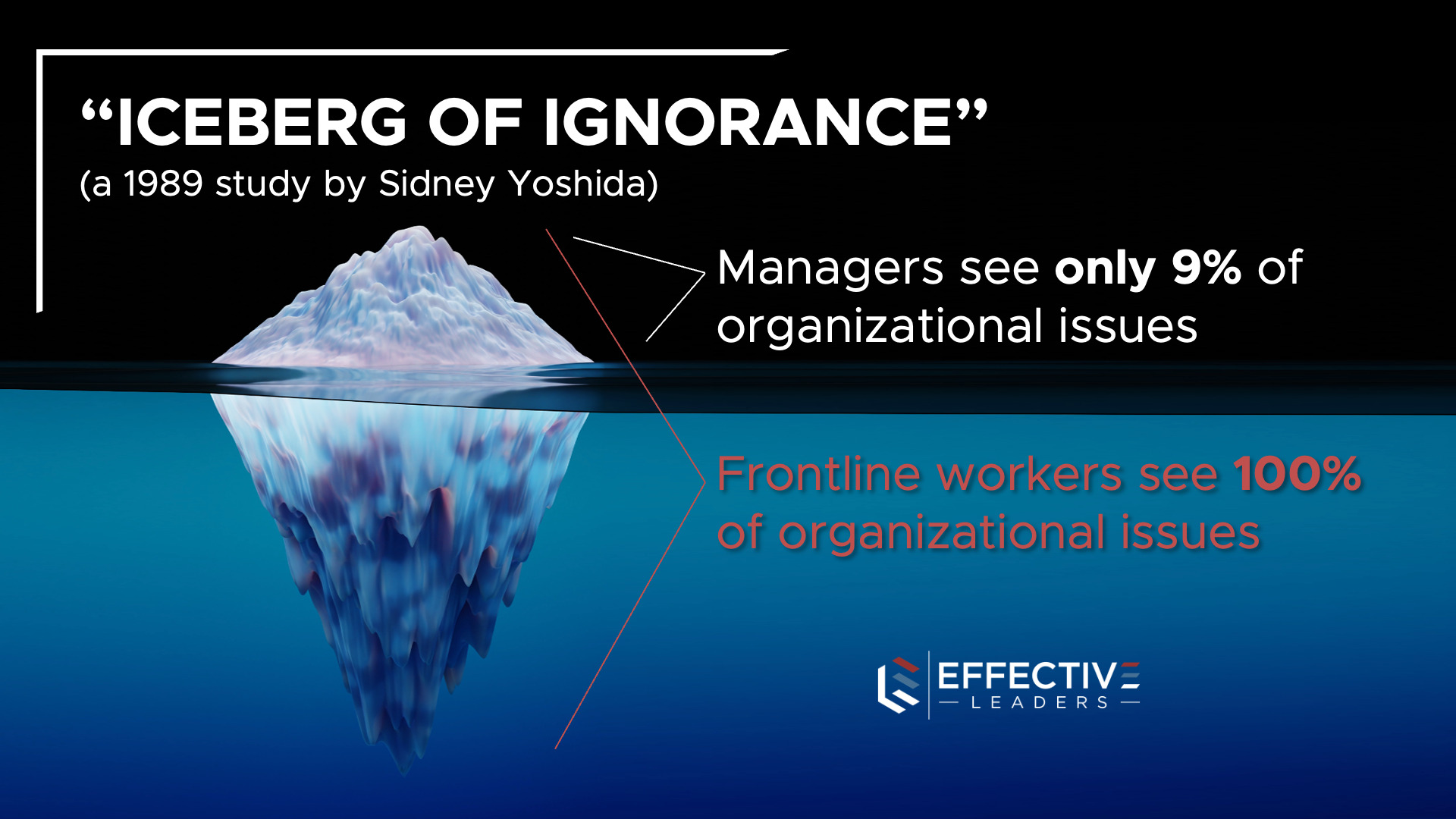The ability to foster collaboration among and across departments can significantly enhance productivity, innovation, and overall organizational performance.
As leaders and team managers, understanding the value of collaboration and employing the right strategies can be the key to unlocking your team’s full potential.
For your team to be truly productive, collaboration is crucial. In fact, Salesforce reported that “86% of employees and executives cite lack of collaboration or ineffective communication for workplace failures.”
And a recent Forbes article underscores the tangible impact of collaboration on organizational performance. Drawing from a study by researchers at the University of Iowa, the article reveals that organizations with collaborative work environments experience higher levels of employee performance and innovation.
Collaboration not only leads to better decision-making but also cultivates a culture of shared knowledge and expertise. This highlights the importance of fostering collaboration as a strategic approach to enhancing overall workplace performance.
But there is a recipe for promoting profitable communication in the workplace using four essential ingredients: people, purpose, platform, and problem.
The Power of Collaboration: Why It Matters
The significance of collaboration in the workplace cannot be overstated. According to a study by Forbes, collaboration drives workplace performance and innovation. When individuals from diverse backgrounds and expertise come together to exchange ideas and insights, the resulting synergy often leads to creative solutions and increased efficiency.

.
And sharing information across your divisions and up and down organizations is vital to increasing the connections, knowledge, and productivity of your people. In fact, in a 1989 study by Sidney Yoshida, he coined the term “iceberg of ignorance” to describe the lack of collaboration that occurs between executive level managers and front line employees.
There is a significant amount of research that establishes the value and positive impact of maximizing collaboration in organizations –
Collaboration fosters a sense of collective ownership, and allows everyone in your organization to benefit from understanding key issues, insights and opportunities.
Enhanced Productivity Through Collaboration
Collaboration doesn’t just boost teamwork and camaraderie; it also has a tangible impact on productivity.
A report by Forbes highlights that collaborative environments have a positive effect on overall organizational performance. When employees collaborate effectively, they can tap into collective intelligence, leading to faster decision-making, increased problem-solving capabilities, and a higher likelihood of meeting project deadlines.
The Recipe for Encouraging Workplace Collaboration
Promoting collaboration requires more than simply urging employees to work together.
It involves creating a conducive environment that encourages open communication, shared objectives, and a sense of purpose. Let’s explore the four essential ingredients of successful collaboration:

- PEOPLE: Building Strong Relationships
Effective collaboration starts with people. To foster a collaborative culture, leaders must nurture strong relationships among team members.
That includes making sure that your people are aware of the strengths and experiences that each memebr brongs to the team, so they know who best to reach out to based on their needs.
This involves cultivating an atmosphere of trust, mutual respect, and inclusivity. Encourage cross-functional business team-building activities, workshops, and training events that facilitate interaction and help connect existing silos between departments. Strong interpersonal connections can lead to better communication and a willingness to share ideas.
-
PURPOSE: Defining Clear Common Goals
Collaboration becomes more meaningful when everyone understands the purpose behind their work. Clearly define objectives, both at the individual and team levels. Help your peole to see that they are interdependent and pulling in the same direction.
Different departments are not competing with each other – they serve and support each other to accomplish a shared mission.
When employees grasp the bigger picture and recognize how their contributions align with the organization’s goals, they become more motivated to collaborate effectively. Regularly communicate the mission, vision, and goals of the organization to ensure that everyone is on the same page.
-
PLATFORM: Providing a Channel for Collaboration
Modern technology has revolutionized the way we collaborate. Utilize digital platforms and tools that facilitate seamless communication and information sharing.
Project management software like Asana or HubSpot or Slack can help streamline workflows, enable real-time updates, and promote transparency. Having a centralized platform not only enhances communication but also enables easy tracking of tasks, responsibilities, and deadlines.
And whether your team uses email only, text, carrier pigeons, or more popular online work-specific channels, the key is to provide a location where they can share ideas asynchonously.
-
PROBLEM: Focusing on a Specific Challenge
Collaboration often thrives when there’s a shared problem to solve. Encourage interdepartmental communication by presenting challenges that require diverse expertise to address.
Your team will be most active in seeking or sharing information when there is a current issue that they are struggling with – and when they know of others who are likely capable of helping with advice or resources.
When teams come together to solve complex problems, they tap into their collective knowledge, fostering a collaborative spirit. Executive coaching can help individuals improve their awareness and problem solving skills – but collaborative conversations within organizations are incredibly helpful.
Additionally, this approach can lead to innovative solutions that may not have been possible in isolated departmental silos.
How do You Make is “SAFE”?
Of course, one of the issues is that people will only share their PROBLEMS in two circumstances –
URGENCY and/or SAFETY…
If their desk is on fire, they will let you know : )
But if you want to create more safety, where collaboration is more comfortable for your team, you can implement a weekly or monthly status report, where everyone shares 3 items:
– WHAT ARE YOU CURRENTLY WORKING ON?
– WHAT IS BLOCKING YOUR PROGRESS?
– WHAT HAVE YOU LEARNED RECENTLY?
This is a simple way to get your people to share challenges and successes that others can benefit from!
Additional Strategies to Enhance Collaboration
 Apart from the core ingredients, here are some additional strategies to enhance collaboration across departments:
Apart from the core ingredients, here are some additional strategies to enhance collaboration across departments:
Regular Communication: Encourage open lines of communication through regular meetings, status updates, and feedback sessions.
Cross-Functional Teams: Create teams comprising members from different departments to work on specific projects or initiatives.
Recognition and Rewards: Recognize and reward collaborative efforts to reinforce the value of teamwork.
Knowledge Sharing: Promote knowledge sharing sessions where experts from various departments can share insights and best practices.
Diverse Perspectives: Embrace diverse viewpoints and encourage employees to voice their ideas without fear of criticism.
As collaboration becomes ingrained in the workplace culture, it has a positive ripple effect on employee experience. Collaboration isn’t just a buzzword; it’s a powerful catalyst for improved productivity and innovation. As leaders and team managers, you have the opportunity to shape a collaborative culture that harnesses the potential of your workforce.
By incorporating the four essential ingredients of people, purpose, platform, and problem, you can create an environment where effective collaboration thrives. Remember, collaboration is a journey that requires continuous effort, but the rewards in terms of increased productivity, employee engagement, and organizational success are well worth the investment…
Want a few FREE RESOURCES to boost Collaboration on YOUR TEAM?
Take a Peek Inside my Team Leadership Toolbox Where You Will Find Over 50 FREE Team Building Resources, Teamwork Articles, and Useful Links to Become a More Effective Leader and Build a More Positive and Productive Team Culture…
– – – – –
Sean Glaze is an author and leadership expert who has worked with clients like Cisco, John Deere, Coca-Cola, and Emory University to increase collaboration, boost productivity, and build exceptional workplace cultures.
and Emory University to increase collaboration, boost productivity, and build exceptional workplace cultures.
As a successful basketball coach and educator for over 20 years, Sean gained valuable insights into leading winning teams – and now he travels around the country to share those lessons…
Sean’s engaging conference keynotes and interactive team building events help accelerate the growth of more effective leaders.
And Sean’s books, Rapid Teamwork, The 10 Commandments of Winning Teammates, and Staying Coachable are entertaining parables with powerful take-aways to improve team performance and leadership!


